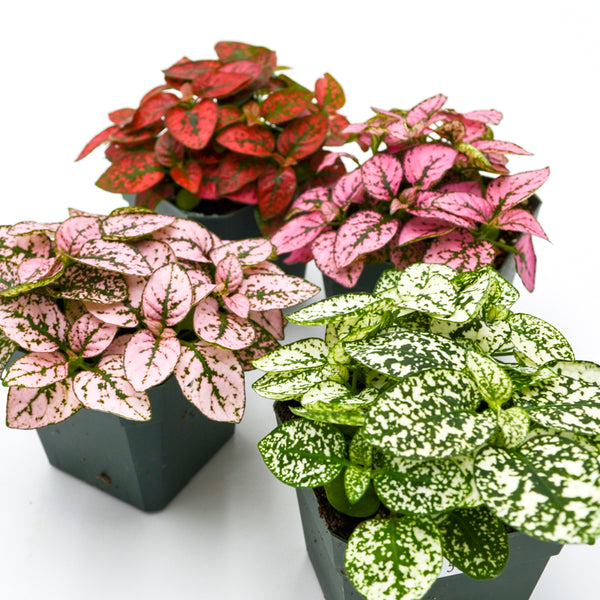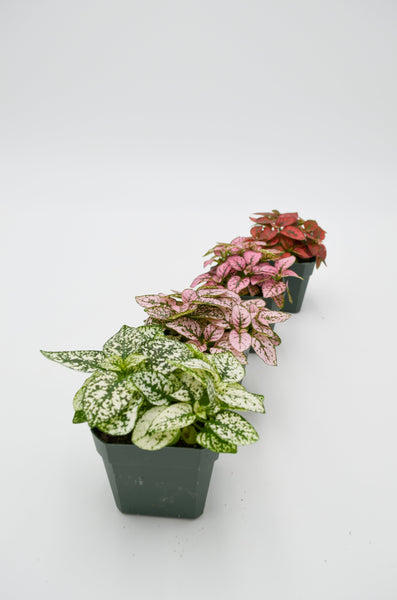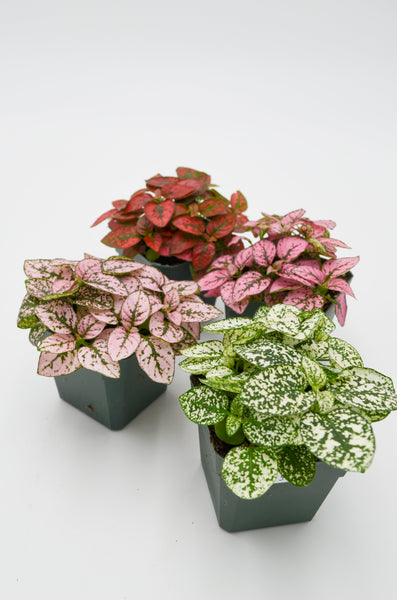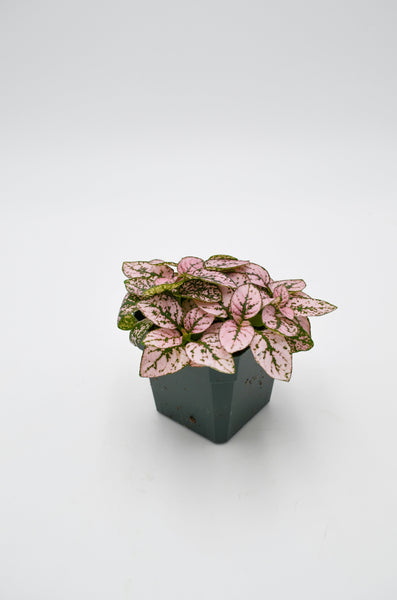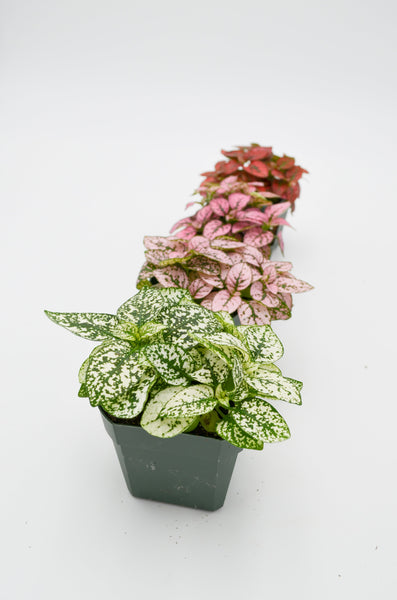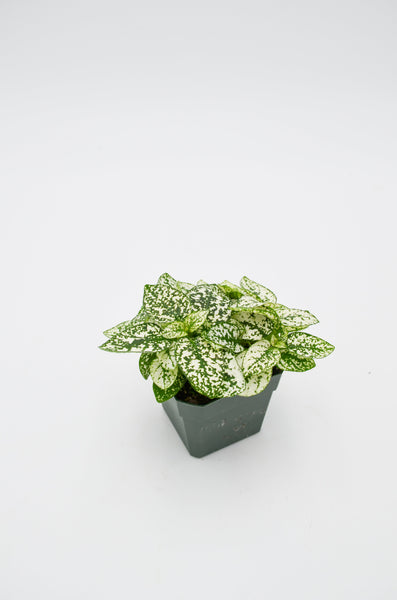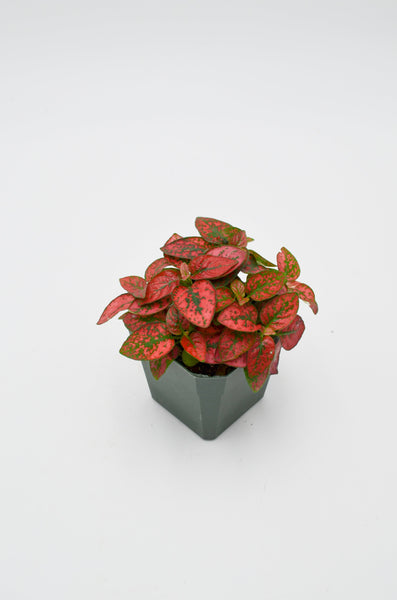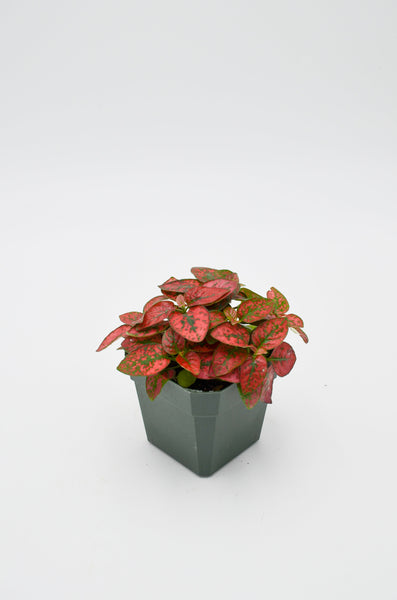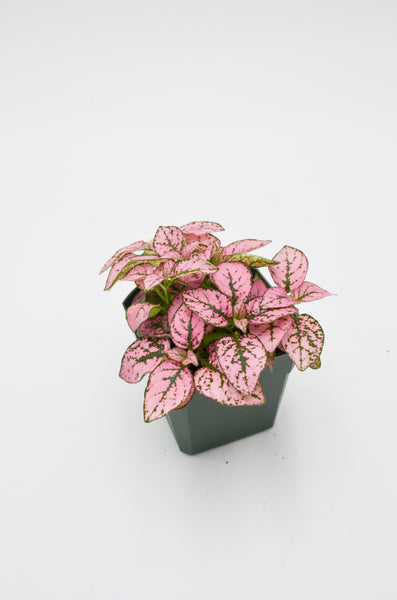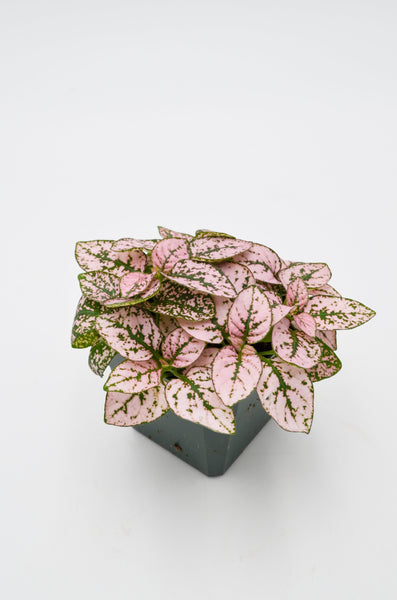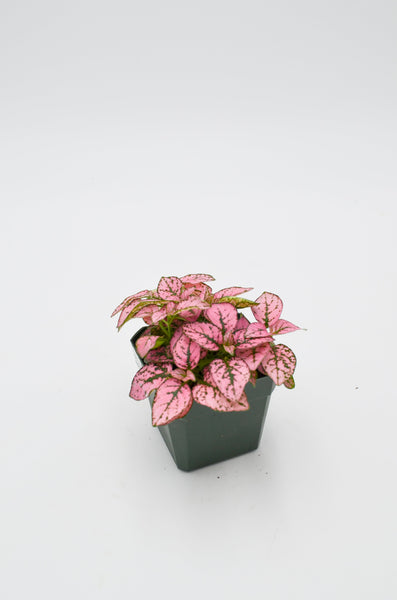Polka Dot Plant (Hypoestes phyllostachya)
Polka dot plants (Hypoestes phyllostachya) are known for their vibrant foliage featuring colorful spots on a green background. They are perfect for adding a pop of color to your indoor space. Follow these care instructions to keep your polka dot plant healthy and thriving:
-
Light: Place your polka dot plant in a location with bright, indirect light. Avoid direct sunlight, as it can scorch the leaves and cause the vibrant colors to fade. Lower light conditions can result in less vibrant foliage and leggy growth, so it's essential to provide adequate light.
-
Water: Keep the soil consistently moist but not soggy. Water your polka dot plant when the top 1 inch of soil feels dry to the touch. Water thoroughly until it drains from the bottom of the pot, and then allow the excess water to drain completely. Avoid overwatering, as this can lead to root rot.
-
Humidity: Polka dot plants prefer high humidity levels. To increase humidity, you can place a tray filled with water and pebbles underneath the pot, mist the leaves regularly, or use a humidifier. A humidity level of 50% or higher is ideal for these plants.
-
Temperature: Maintain a temperature range of 65-75°F (18-24°C) for optimal growth. Polka dot plants can tolerate a range of temperatures but avoid exposing them to temperatures below 60°F (15°C) or sudden temperature changes.
-
Fertilizer: Feed your polka dot plant with a balanced liquid fertilizer every 4-6 weeks during the growing season (spring and summer). Use a half-strength solution to avoid over-fertilizing. Reduce feeding to once every 2-3 months during fall and winter.
-
Pruning: Prune your polka dot plant regularly to encourage bushy growth and maintain its shape. Pinch back the growing tips and remove any leggy or overgrown stems. You can also trim back any yellow or brown leaves as needed.
-
Repotting: Repot your polka dot plant every 1-2 years or when the roots outgrow the pot. Choose a well-draining potting mix and a pot that is 1-2 inches larger in diameter than the current one. Be gentle when handling the roots, and water the plant thoroughly after repotting.
-
Pest control: Keep an eye out for common pests such as spider mites, aphids, and whiteflies. Treat any infestations with insecticidal soap or neem oil, following the manufacturer's instructions.
Pet-friendly or toxic to pets?
According to the ASPCA, polka dot plants (Hypoestes phyllostachya) are considered non-toxic to both cats and dogs. While ingestion of any plant material can cause mild gastrointestinal upset in some pets, the polka dot plant is generally safe to have around your furry friends. However, it's always a good idea to discourage pets from chewing on plants and to monitor them for any signs of distress after ingesting plant material.












